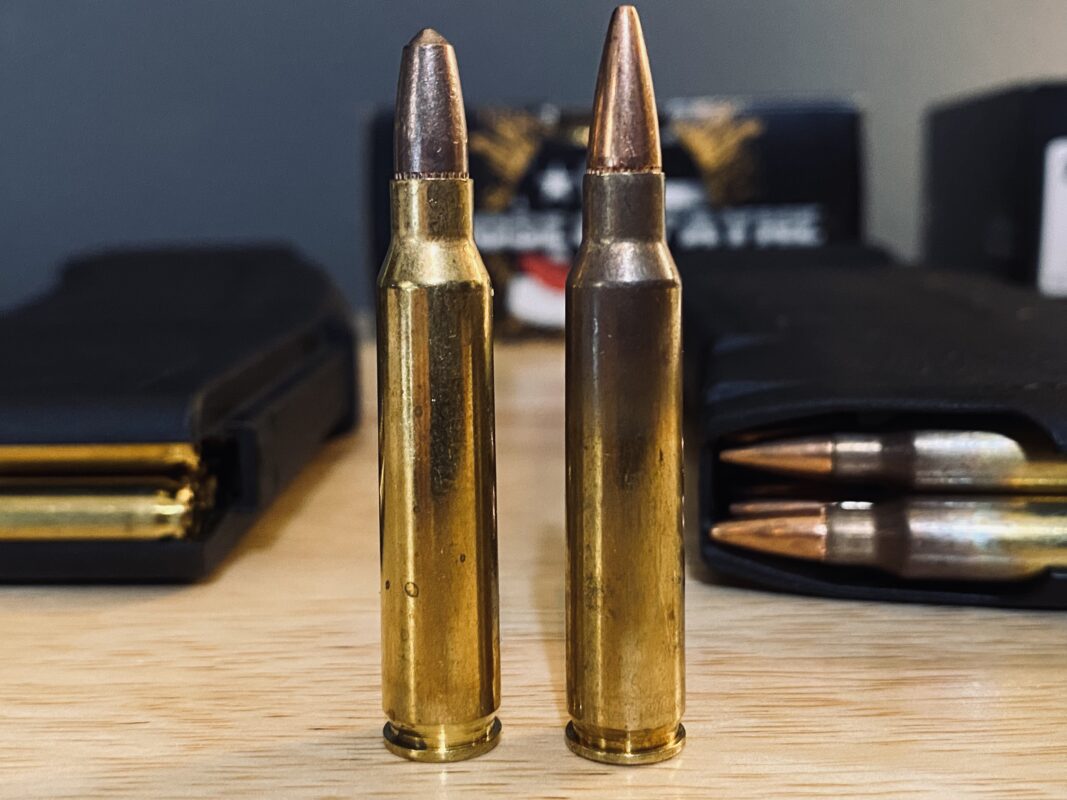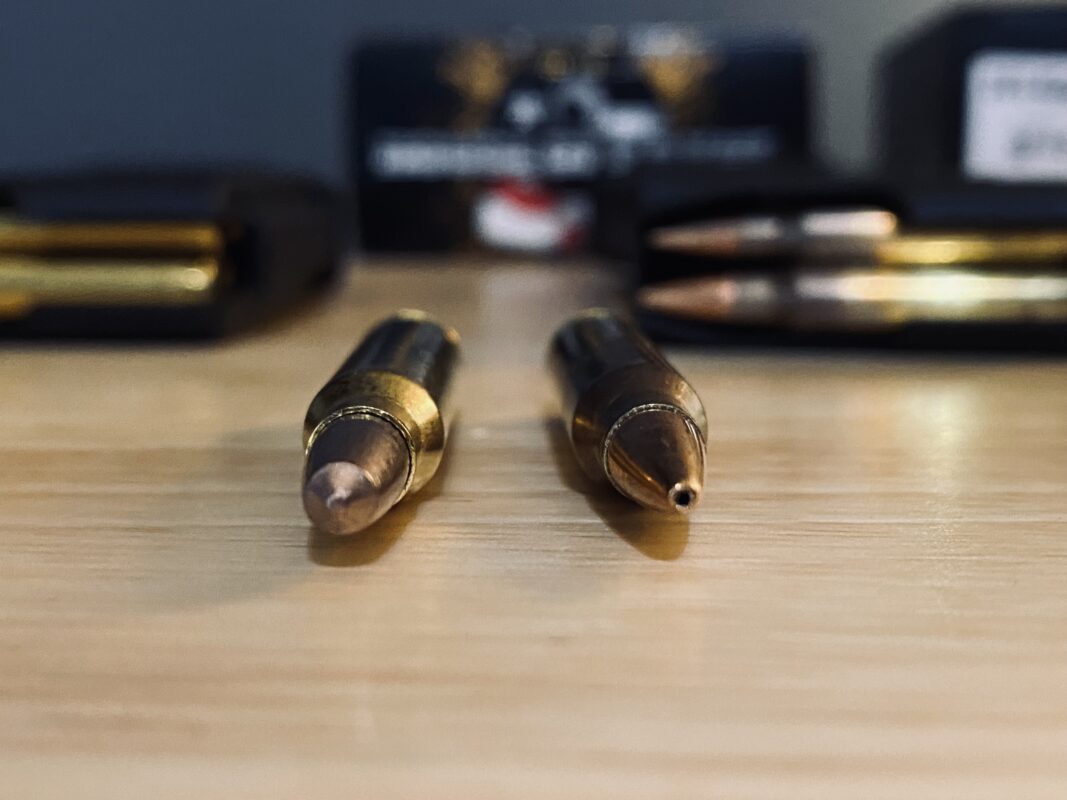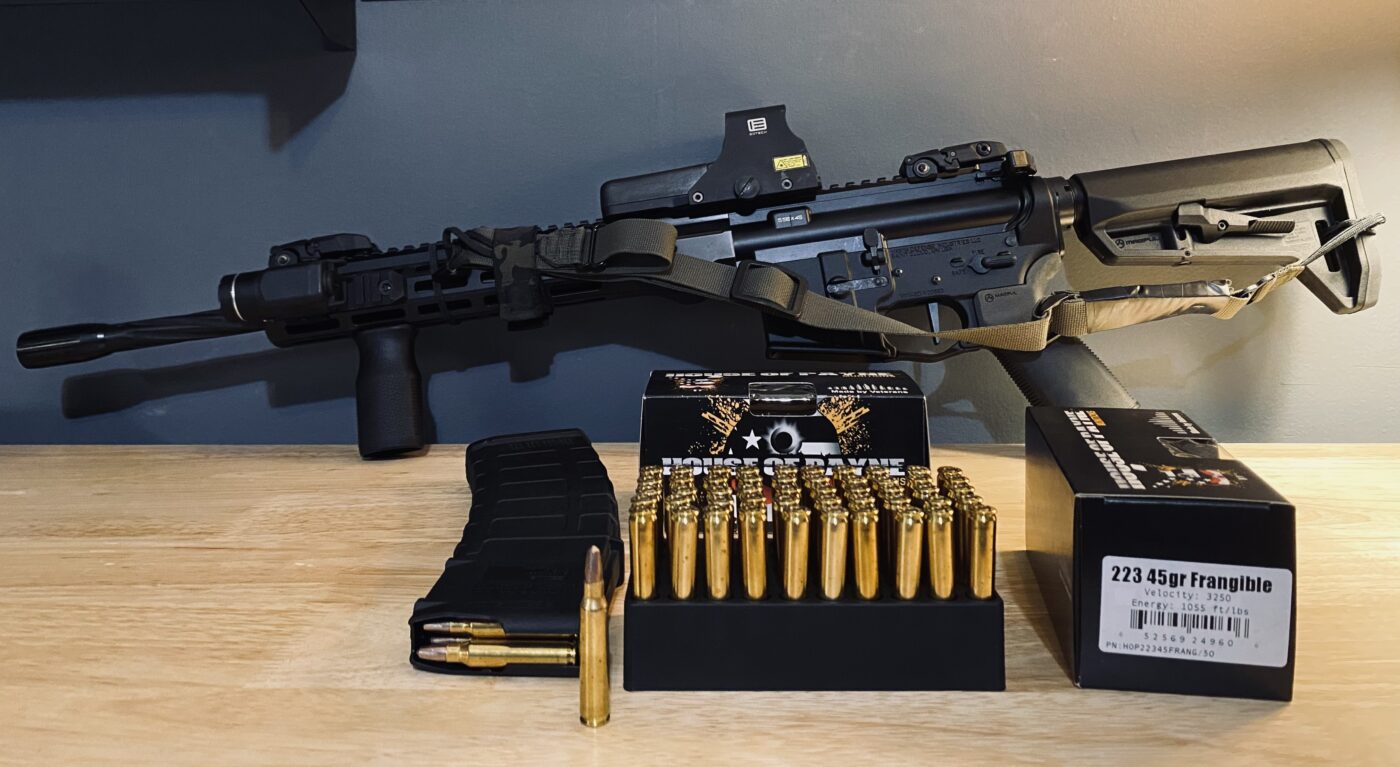HOP Blog
Can You Use 223 Frangible Ammo For Home Defense?
Frangible bullets, designed to fragment upon impacting soft tissue, offer excellent self-defense and home defense capabilities without the over-penetration risks associated with hollow point bullets.
Using 223 frangible ammunition for home defense has become an increasingly popular topic of discussion.
In this article, we break down why 223 frangible ammo is a great choice for home defense. But first, we need to understand what it is and how it’s made to know its capabilities for home defense and CQB.
Key Takeaways
- Frangible bullets are designed to fragment upon impacting soft tissue, reducing the risks of over-penetration and ricochet. This is achieved through bullets manufactured from compressed powdered metals like copper or tin.
- Despite concerns about their stopping power compared to hollow-point rounds, advancements in technology have improved frangible ammo’s effectiveness, especially in close-quarters situations.
- HOP Munitions offers a balanced solution for homeowners, combining safety and performance. These rounds are engineered to reduce ricochet and overpenetration, making them a safe choice for home defense without compromising on stopping power.
Understanding 223 Frangible Ammunition
Frangible ammunition is designed to disintegrate upon impact with hard surfaces and soft tissue, reducing the likelihood of ricochet and over-penetration—two critical concerns in a home defense scenario.
The “frangibility” of this ammo is achieved through the use of compressed powdered metals, typically copper or tin, which form the bullet.
These materials, lacking the cohesion of traditional lead or jacketed bullets, break apart into tiny particles upon impact, causing multiple wound channels and significant trauma.
The Case for 223 Frangible Ammo in Home Defense
The primary argument for using 223 frangible ammo for home defense is due to its safety features. Traditional ammunition, particularly full metal jackets (FMJ) or hollow points, carry a higher risk of penetrating walls and potentially injuring bystanders.
Frangible ammo, conversely, offers reduced over-penetration, making it a safer choice in densely populated living spaces or situations where loved ones are present in adjacent rooms.
Another aspect to consider is the reduced risk of ricochet. In a home defense situation, bullets can strike a variety of surfaces—metal, glass, wood, or even concrete. Frangible ammo’s ability to break apart on impact minimizes the danger posed by ricocheting bullets, which could harm the shooter or innocent parties.
Performance Considerations
While the safety advantages of 223 frangible ammo are clear, its effectiveness in stopping a threat is critical. Some argue that frangible ammunition lacks the stopping power of hollow-point rounds designed to expand upon impact. This is a significant consideration, as the primary goal in a self-defense situation is to neutralize the threat as quickly as possible.
However, advancements in frangible ammunition technology have led to improved performance in close-quarters situations typical of home defense. Modern 223 frangible rounds are capable of causing significant trauma upon impact with soft tissue, thanks to their high velocity and the fragmentation process, which can create multiple wound channels.
Practical Application and Limitations
It’s essential to understand the scenarios where 223 frangible ammo is most effective. Given its characteristics, this type of ammunition excels in close-quarters engagements, where its safety benefits are maximized, and its potential for stopping a threat is within acceptable standards.
However, it’s also crucial to know the disadvantages of frangible bullets. The reduced penetration power means that frangible ammo may not be the best choice if a barrier must be penetrated to reach the threat. Additionally, its effectiveness decreases over longer distances due to the loss of velocity and fragmentation upon impact. It relies on velocity to achieve maximum fragmentation upon impact.
Frangible Ammo vs. Hollow Points
When talking home defense ammunition, two types often come to the forefront of discussion: frangible ammo and hollow points. Each has its unique characteristics, benefits, and drawbacks, making them suited to different scenarios. Understanding the differences between these two types of ammunition is important for making a decision about which is best suited for your home defense needs.

Construction and Design
Frangible ammunition is constructed from compressed powdered metals, such as copper or tin, that disintegrate into powder upon impact with hard surfaces. This design aims to minimize over-penetration and reduce the risk of ricochet.
Hollow-point bullets, on the other hand, are designed with a cavity in the tip that causes the bullet to expand upon impact, increasing the diameter of the wound channel to stop a threat more effectively.

Stopping Power
Hollow points are renowned for their stopping power. The expansion upon impact not only causes significant damage to the target but also transfers the bullet’s energy efficiently, reducing the chance of the bullet exiting the target and causing collateral damage.
Frangible ammo, while breaking apart upon impact with hard surfaces, can still cause considerable trauma to soft targets by creating multiple wound channels, though generally to a lesser extent than the expanded hollow-point bullet.
Safety Concerns
The primary advantage of frangible ammunition in a home defense scenario is its increased safety in terms of over-penetration and ricochet. By disintegrating upon impact with hard surfaces, frangible bullets significantly reduce the risk of accidental injury to others in the home or neighboring residences.
Hollow points also address the issue of over-penetration to some degree through expansion, but they can still pose a greater risk of passing through barriers compared to frangible rounds.
Practical Application
Choosing between frangible ammo and hollow points often comes down to the specific needs and concerns of the homeowner.
Frangible ammo is particularly suited to environments where over-penetration and ricochet pose significant risks, such as apartment buildings or homes with thin walls and densely populated areas.
Hollow points, with their enhanced stopping power, may be preferred in situations where the homeowner is more concerned with neutralizing a threat quickly and effectively, assuming the environment allows for safe use without risk to bystanders.
Some tier-1 military units that are responsible for hostage rescue and other direct action mission sets use frangible ammo in their carbines. The first magazine is loaded with frangible ammo, and all subsequent mags are loaded with some type of ball, green tip, or hollow point. The reason is that they want to reduce collateral damage inside the structures but have something a little more potent during their exfil.

For home defense, we recommend running the first mag with frangible ammo and then having a spare mag loaded with a heavier 77-grain hollow point load.
HOP Munitions 223 Frangible Ammunition
The HOP Munitions 223 – 45gr Frangible ammo stands out for its consistent terminal performance. Engineered with precision, these rounds are designed to offer a new level of protection and performance for homeowners concerned with the safety of their family and property.
Manufactured to disintegrate upon impact, this ammunition drastically reduces the potential for ricochet and overpenetration, addressing two of the most significant concerns in close-quarter shooting scenarios. Whether you’re training in confined shoot houses, engaging in CQB, or looking for a safe and effective home defense round, the HOP Munitions frangible rounds provide an unparalleled solution.

With a velocity of 2,900 feet per second and an energy output of 1,027 foot-pounds, the HOP Munitions 223 frangible rounds ensure you do not compromise on stopping power. The rounds come packaged in 250-round ammo cans, ensuring you’ve got plenty of ammo for training and home defense needs.
In conclusion, the decision to use frangible ammo for home defense should be based on an understanding of the unique circumstances of each homeowner’s living situation, the layout of their residence, and the potential for bystanders to be in harm’s way. As with any aspect of home defense, training and familiarity with your firearms and ammunition are paramount. Practicing with 223 frangible ammunition and understanding its performance characteristics will ensure that you are prepared to use it effectively should the need arise.
As the landscape of home defense continues to evolve, ammunition like the HOP Munitions 223 – 45gr Frangible rounds play a critical role in providing homeowners with reliable, safe, and effective options for protecting what matters most.

